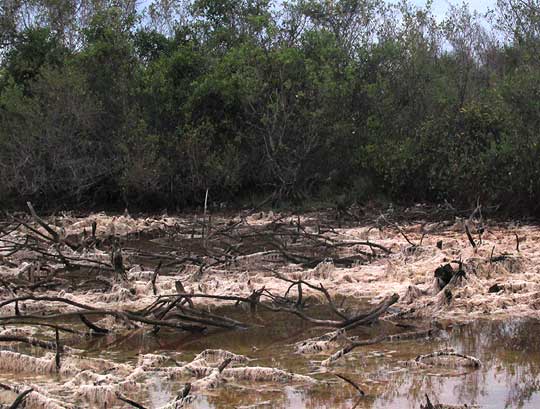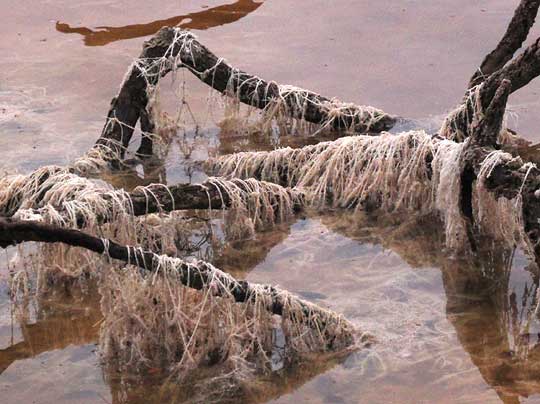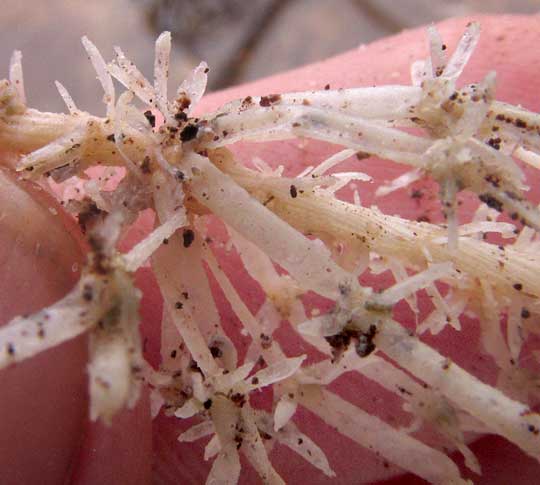Excerpts from Jim Conrad's
Naturalist Newsletter
from the June 7, 2015 Newsletter issued from Río Lagartos, on the Yucatan Peninsula's northern coast (~N21.60°, ~W88.16°), Yucatán state, MÉXICO
A FORLORNNESS OF CHARA
On the morning after the first good rain of the pending rainy season I went biking looking for blossomings and awakenings the rain might have wrought. One spot along the coastal road I'd passed many times without anything there catching my attention suddenly did catch my eye. It was a low spot in the mangroves where woody plants had died, leaving a shallow pond that had dried up during the last two or three months, but in which now pooled ankle-deep, brackish water. It was brackish despite the rainwater being freshwater, because sometimes the spot is regularly flooded with saltwater. Below, you can see why the pond attracted my attention:

Surrounded by the somber greenness of a wall of Buttonwood Mangrove, a confusion of black, dead tree branches was draped with white, cobwebby, soggy, lifeless "something." Up closer, the "something" began showing signs of organization, as seen below:

Much closer, features of the white stuff jogged certain memories, and I began to recognize the green alga called Chara, as seen below:

Chara alga is multicellular and at first glance resembles certain flowering land plants, because of stem-like and leaf-like structures, which nonetheless are not stems or leaves because they lack the vascular plumbing all flowering plants have. As an alga, Chara has no roots and doesn't produce flowers. It reproduces vegetatively in various ways, and sexually by producing oospores. Sometimes Chara species are called stoneworts.
The dead, white Chara draping dead tree stems in the picture once grew in green masses suspended in water above the dead, at-that-time-submerged stems in the picture. The water level dropped, leaving the Chara stranded, dying, drying out, and turning white. At one time the water must have been remarkably dense with Chara. But, what Chara species might it be?
In 2010, Scribailo and Alix estimated that 17 Chara species occur in Mexico, but that didn't help much bringing order to the genus. You may recall that in Texas we found two Chara species fairly commonly occurring in the Dry Frio River, but were unable to identify them to species level. Mexico's Chara species are considerably less studied than those of Texas and the US.
Still, a good bit of studying pictures of identified Chara species on the Internet gave me the impression that our Chara might belong to what RD Woods in his 1965 "Monograph of the Characeae" referred to as "the species complex of Chara zeylanica." The complex consists of several highly variable "macrospecies." My impression is based on little more than the fact that alga assigned to this complex appear to have thick, striated, stem-like structures with whorls of unusually short, leaf-like appendages, and the whorls are fairly close together.